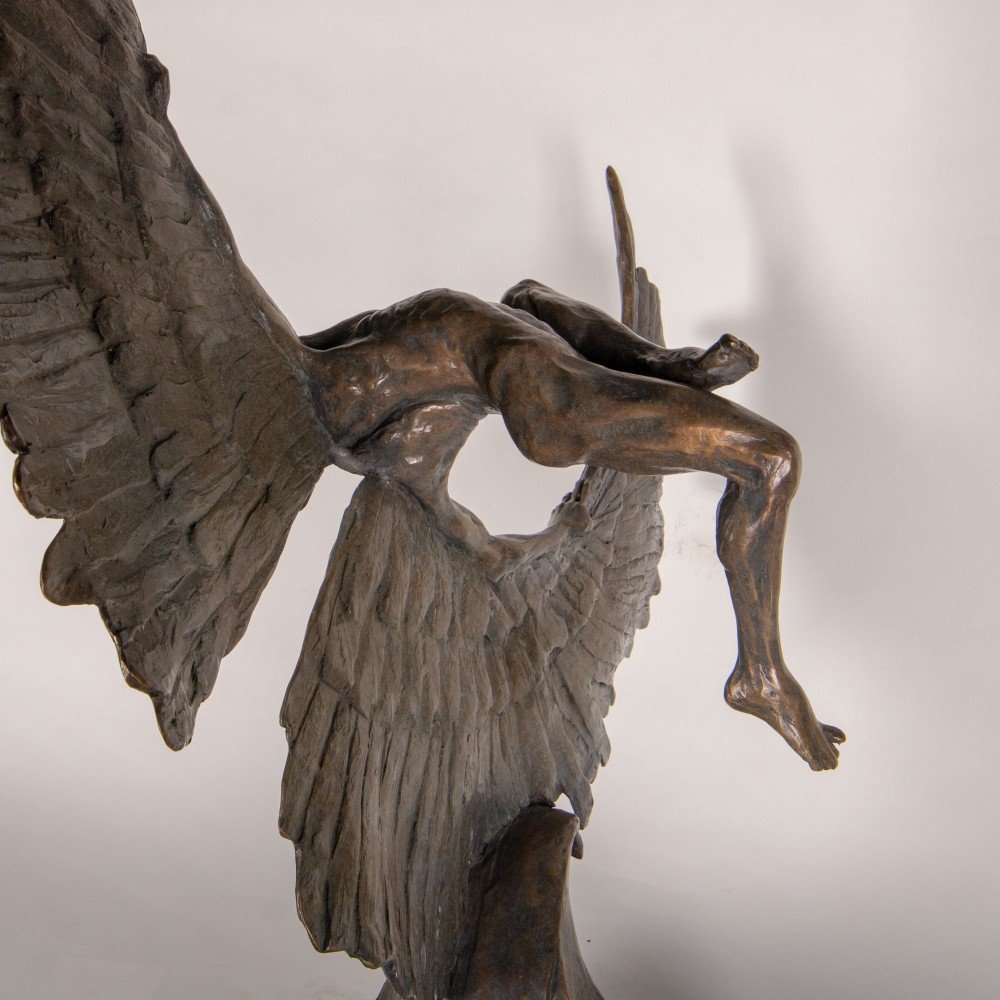
The process to commission and deliver a sculpture was led by Gateshead Council's Art in Public Places panel, the Libraries & Arts and Planning & Engineering Departments, and Northern Arts – a regional subdivision of the Arts Council of Great Britain which existed from 1990 to 2002. Mike White, the Assistant Director Arts at Gateshead Council from 1989 to 2000, stated that the intention was for the Angel of the North to act as a "millennial image that would be a marker and guardian for our town". In 1990, Gateshead Council first conceived of a sculpture to act as a new landmark for the southern approach into Gateshead and Tyneside, standing near the A1 and A167 road interchange. Prior to the construction of the Angel of the North, the most significant landmarks that signalled travellers' arrival into Tyneside, when travelling from the south, were the bridges that crossed the River Tyne. Gateshead Garden Festival was held in 1990 and signalled an emerging arts policy in the borough. The Angel of the North faced opposition during its design and construction phases, but is now widely recognised as an iconic example of public art and as a symbol of Gateshead and the wider North East region. On 14 February 1998, the Angel was transported overnight to the installation site, and the sculpture was erected the next morning. Hartlepool Steel Fabrications were responsible for the manufacture and assembly of the 208-tonne sculpture. Although initially reluctant, Gormley agreed to undertake the project after visiting and being inspired by the Angel's proposed site – a former colliery overlooking the varied topography of the Tyne and Wear Lowlands National Character Area. The sculpture was commissioned and delivered by Gateshead Council who approached Gormley to be the sculptor.

The vertical ribs on the body and wings of the Angel act as an external skeleton which direct oncoming wind to the sculpture's foundations, allowing it to withstand wind speeds of over 100 miles per hour (160 km/h). It stands 20 metres (66 ft) tall with a wingspan of 54 metres (177 ft) – which is larger than a Boeing 757 aircraft. The COR-TEN weathering steel material gives the sculpture its distinctive rusty, oxidised colour.

The design of the Angel, like many of Gormley's works, is based on Gormley's own body. Completed in 1998, it is believed to be the largest sculpture of an angel in the world and is viewed by an estimated 33 million people every year due to its proximity to the A1 and A167 roads and the East Coast Main Line. The Angel of the North is a contemporary sculpture by Antony Gormley, located in Gateshead, Tyne and Wear, England. 6.2 metres (20 ft) wing height at shoulder.


 0 kommentar(er)
0 kommentar(er)
